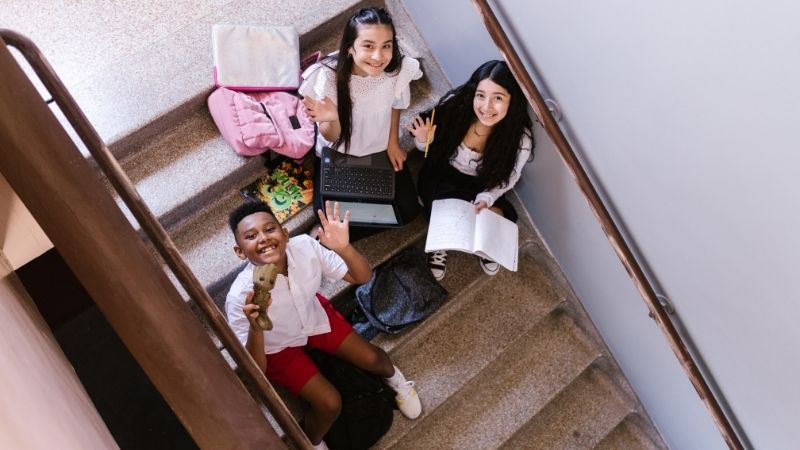
In the realm of education, the design of e-learning courses plays a vital role in facilitating engaging and effective learning experiences. This article explores the concept of 'Designing Progress: The Art of E-Learning Design,' delving into various aspects such as visual course layouts, interactive content, and multimedia integration.
Additionally, it investigates the seamless world of mobile learning design and emphasizes the pivotal role that user experience plays in empowering learners. Through allegory, this piece aims to captivate readers by providing concise yet informative insights into the artistry behind e-learning design.
Key Takeaways
- Visual storytelling simplifies complex concepts and makes them more accessible in course layouts.
- Interactive elements within course layouts enhance engagement and active participation.
- Multimedia integration engages learners through text, images, audio, video, and interactive elements.
- Mobile learning design incorporates gamification and microlearning for engagement and convenience.
Visualizing Learning: Enhancing Course Layouts for Engaging Experiences
The enhancement of course layouts plays a crucial role in creating engaging learning experiences by visualizing content effectively. By enhancing instructional design and optimizing learning outcomes, educators can create courses that captivate learners and promote active engagement.
Visual storytelling is a powerful technique that engages learners through compelling narratives, allowing them to connect with the content on a deeper level. Through the use of visuals such as images, videos, and infographics, complex concepts can be simplified and made more accessible to learners.
Additionally, well-designed course layouts provide a clear structure and organization to the content, making it easier for learners to navigate and comprehend. The strategic placement of interactive elements within these layouts further enhances engagement by encouraging learners to actively participate in their own learning process.
Overall, effective course layouts visually engage learners while optimizing instructional design to improve learning outcomes.
Interactive Learning: Unleashing the Power of Engaging Content
Engaging content in interactive learning has the power to stimulate and captivate learners. One way of achieving this is through gamification, which involves incorporating game elements into educational materials.

Gamification not only enhances learner engagement but also promotes motivation and retention of knowledge.
Another emerging technology that can revolutionize interactive learning is virtual reality (VR). VR enables learners to immerse themselves in realistic and simulated environments, providing a more engaging and experiential approach to education.
By creating a sense of presence, VR can enhance learners' cognitive processes and facilitate deeper understanding of complex concepts.
Moreover, the use of VR in interactive learning fosters active participation, collaboration, and problem-solving skills development.
Multimedia integration creates a dynamic learning environment by incorporating various forms of media to enhance the educational experience. It utilizes the combination of text, images, audio, video, and interactive elements to engage learners and promote active participation.
By integrating multimedia into course materials, educators can cater to different learning styles and preferences, making the learning process more inclusive and effective. Visual elements can aid in understanding complex concepts, while interactive content fosters critical thinking and problem-solving skills.
Additionally, multimedia integration allows for flexibility in delivering content across different devices and platforms, enabling learners to access educational materials anytime and anywhere. The seamless blend of multimedia elements creates an immersive learning experience that stimulates interest and motivation, leading to improved knowledge retention and application in real-world contexts.

Ultimately, multimedia integration plays a pivotal role in creating a dynamic learning environment that empowers learners with the freedom to explore and engage with educational content on their own terms.
Mobile Learning: Designing for Seamless and On-the-Go Education
Mobile learning offers learners the flexibility to access educational materials anytime and anywhere, catering to their on-the-go lifestyle. With the advancement of technology, mobile devices have become a popular platform for delivering educational content.
Designing for mobile learning involves incorporating elements such as gamification and microlearning to enhance engagement and promote effective learning experiences. Gamification introduces game-like features, such as badges or leaderboards, to motivate learners and make the learning process enjoyable.
Microlearning breaks down complex concepts into bite-sized modules that can be easily consumed on mobile devices. This approach allows learners to fit learning into their busy schedules and facilitates knowledge retention.
Overall, mobile learning design prioritizes convenience, interactivity, and personalization in order to provide a seamless and engaging educational experience for users with a desire for freedom in their education journey.
User Experience in Education: Empowering Learners Through Intuitive Design
User experience in education is enhanced through the implementation of intuitive design principles.
Intuitive navigation allows learners to easily navigate through educational platforms, accessing content and resources with ease. This fosters a sense of freedom and empowerment, allowing learners to take control of their educational journey.

Personalized feedback is another key aspect of user experience in education. By providing learners with tailored feedback based on their individual progress and performance, educators can create a more personalized learning experience that meets the unique needs of each learner. This not only enhances engagement but also promotes growth and development.
Overall, intuitive design principles and personalized feedback work together to create an environment that empowers learners, enabling them to maximize their learning potential and achieve their educational goals.
Frequently Asked Questions
What Are Some Practical Tips for Designing Visually Appealing Course Layouts in E-Learning?
Practical tips for designing visually appealing course layouts in e-learning include considering color psychology to evoke desired emotions and using font selection that enhances legibility and engagement.
How Can Interactive Content Enhance the Learning Experience for Students?
Interactive content significantly enhances the learning experience for students by increasing engagement and improving user experience. Incorporating visually appealing course layouts, multimedia integration, and mobile learning optimization are practical tips to achieve seamless education.
Multimedia integration in e-learning courses can enhance the learning experience by incorporating various forms of media such as videos, images, and audio. Examples include interactive simulations, virtual reality modules, and gamified content that engage learners and promote active participation in the educational process.
How Can Mobile Learning Design Be Optimized for Seamless and On-The-Go Education?
Optimizing mobile learning design for seamless and on-the-go education involves incorporating gamification and microlearning techniques. By creating engaging and interactive content, users are motivated to learn in short bursts, improving user experience and knowledge retention.
What Role Does User Experience Play in the Field of Education and How Can It Be Improved?
The role of user experience in education is pivotal as it enhances accessibility and personalization. Improving user experience involves strategies such as ensuring easy navigation, engaging multimedia integration, and interactive content to create a seamless learning journey.

 Careers in EducationElementary EducationHigh School EducationEducational TechnologyTeaching StrategiesSpecial EducationPrivacy PolicyTerms And Conditions
Careers in EducationElementary EducationHigh School EducationEducational TechnologyTeaching StrategiesSpecial EducationPrivacy PolicyTerms And Conditions
